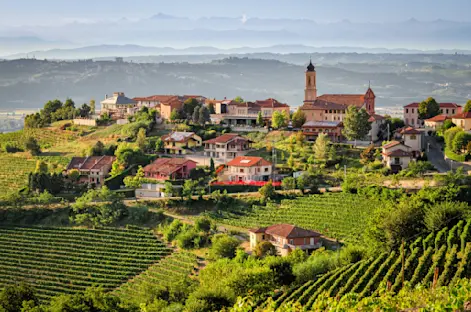
Immersing stressed volunteers in a 360-degree, virtual, Douglas-fir forest complete with scents, sights and sounds boosted their moods, sharpened their short-term memories and deepened their feelings of connectedness to nature.
Virtual reality (VR)—a technology that simulates a three-dimensional (3D) environment, allowing users to interact with a computer-generated world as if they were physically present—can create dynamic, immersive and personalized experiences. VR has been used in many fields, from helping students learn by allowing them to explore historical environments virtually to treating mental health conditions, including anxiety, phobias and PTSD, by providing controlled exposure to feared situations. VR can even metaphorically transport you into situations that open you up to different perspectives, which can lead to increased empathy for and understanding of others.
Artificial intelligence (AI) is closely related to virtual reality. AI can generate 3D models and even entire virtual environments, expanding the possibilities of VR content creation. In other applications, AI can automate repetitive and time-consuming tasks, freeing up human workers for more creative and strategic work. AI is capable of tackling some of the world’s most challenging problems, such as climate change modeling, disease prediction and personalized medicine. For instance, AI can help optimize energy consumption in buildings or develop new drug therapies.
Now, virtual reality and artificial intelligence are being employed in intriguing ways to benefit nature. VR forests are lifting moods and furthering environmental causes. AI is monitoring plant and tree health in our cities and is aiding in detecting wildfires. AI and satellite imagery from NASA have even teamed up to attempt climate change mitigation. And with AI, researchers have found a faster, more accurate way to map forest biomass, critical for measuring how much carbon is retained and released in trees. This innovative fusion of space tech and machine learning could revolutionize how we manage and preserve forests in a warming world.

VR videos are interactive, 360-degree recordings that allow viewers to immerse themselves in a digital environment and explore it from different angles, often with the help of VR glasses and/or headsets.
Virtual-reality forests reboot your brain and lift your mood
The practice of shinrin yoku, or forest bathing—consciously immersing oneself in nature—gained popularity in Japan during the 1980s as a national health program. It has since gained global recognition as a practice for lowering blood pressure, reducing stress and generating overall well-being. But can forest bathing also be effective when done virtually?
To find out, researchers from Germany’s Max Planck Institute for Human Development and the University Medical Center Hamburg-Eppendorf produced a high-quality, 360-degree, virtual-reality video in Europe’s largest Douglas fir forest—the Sonnenberg Nature Reserve in Parchim, Germany—complete with original sounds and the scent of essential oils from the evergreen tree. Then, more than 130 study participants were put into an acute stress situation using worry-inducing images. Subsequently, they were equipped with VR glasses and encountered the virtual forest scenery either as a full sensory experience (with images, scents and sounds) or in a reduced form, where forest stimuli appealed to just a single sense: hearing, sight or smell. In variants where only hearing or smell was activated, participants were placed in a neutral virtual environment to minimize visual stimuli and the influence of VR technology.
The results, to be published in the August 2025 edition of the Journal of Environmental Psychology, show that the combination of all three sensory stimuli led to a significantly greater improvement in mood and a stronger feeling of connection with nature compared to when individual sensory stimuli were presented. In addition to positive effects on mood, there were some improvements in working memory, the cognitive function that enables us to store, process and retrieve information in the short term.
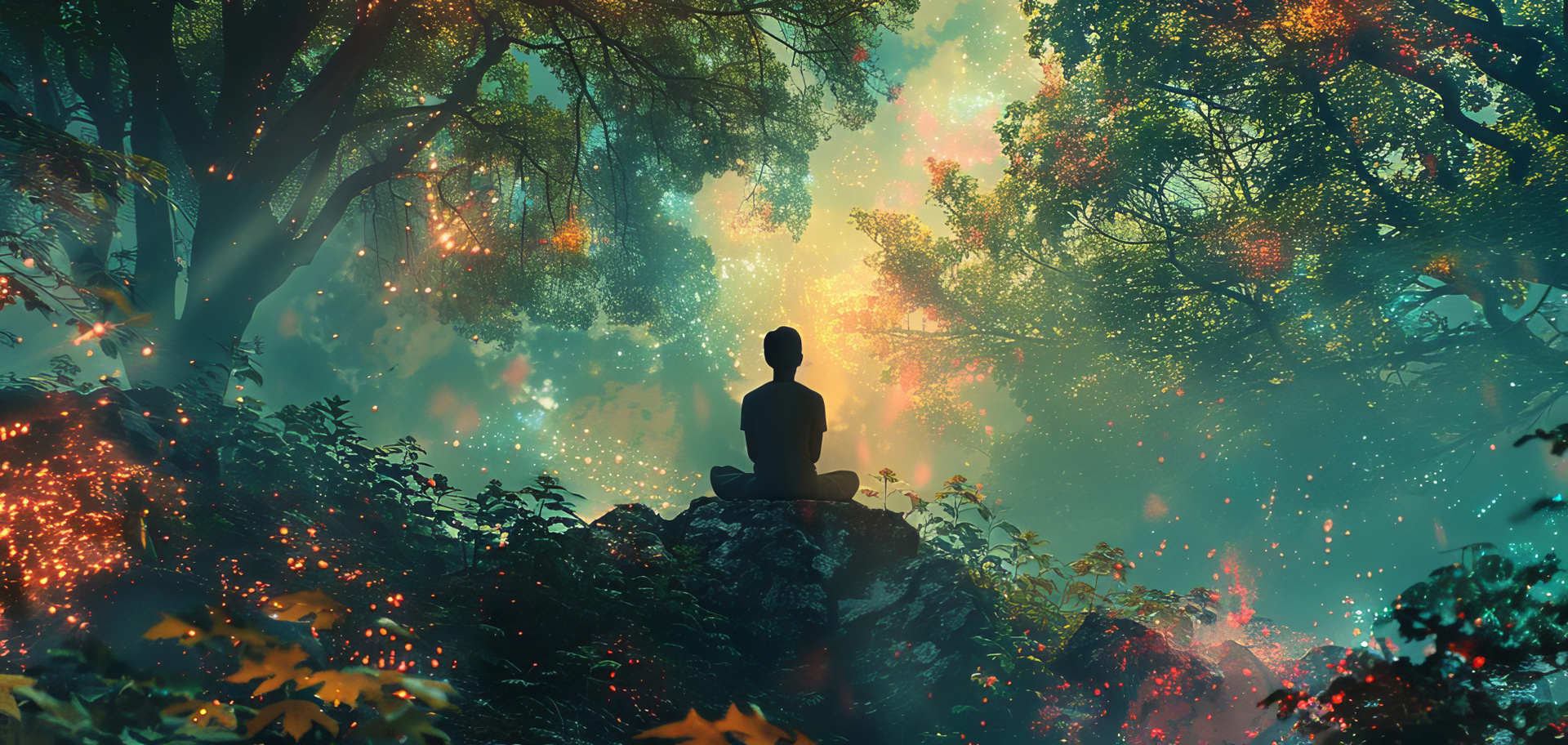
Forest bathing in virtual reality can provide positive emotional and restorative effects—even if it doesn’t replace actual nature.
While further studies with larger samples are needed to confirm the results and provide a better understanding of the mechanisms behind the restorative effects of virtual-reality nature experiences, the researchers say that it’s already clear that digital nature can produce emotional responses—even if it doesn’t replace actual nature.
Virtual-reality videos increase environmental awareness
That’s not all that VR nature can do. It can lead to environmental actions—and open pocketbooks.
Convincing people to engage with issues and problems that seem emotionally and geographically distant is one of the biggest challenges for organizations working to protect the environment. That’s why a group of media psychologists at Germany’s University of Cologne recently examined the effects of presenting environmental-protection documentaries by way of 360-degree, virtual-reality videos compared with other, more traditional media forms.

Nature documentaries presented as 360-degree, virtual-reality videos have a stronger positive effect on well-being than other forms of media—such as 2D videos or podcasts.
For their study, the scientists showed three documentaries to 128 participants, who had been randomly assigned to four different groups: one group was shown the documentaries as 360-degree, VR videos; a second group watched them as 2D videos on a TV; a third group listened only to the audio track, like a podcast; and a fourth group read a corresponding text.
After each documentary, the participants rated their subjective feelings of having been physically present in the depicted scenes, their feelings of having been intensively involved in the narratives, and the affective impacts of the documentaries. They were also asked about their own motivations for wanting to protect the environment and how much they would be willing to donate to the presented campaign.
The results of the experiment, published in the journal Computers in Human Behavior in July 2025, show that the virtual-reality videos evoked stronger feelings of being physically present in the depicted scenes, of being transported by the narratives, and of having positive emotions in comparison with the other forms of presentation. This, in turn, led to increased motivation to protect the environment and a greater willingness to donate.

In contrast with 2D videos, podcasts and texts, virtual-reality videos evoked stronger feelings for environmental protections in study participants. This, in turn, led to increased motivation to protect the environment and a greater willingness to donate.
This study emphasizes the potential of virtual reality as a medium for presenting environmental-protection campaigns and the importance of narratives. Media experts and organizations should take note that immersive experiences could have greater impacts on behavioral intentions and personal attitudes than more traditional forms of media.
Artificial intelligence helps forests monitor themselves
Managing forests today is increasingly challenged by environmental changes that have intensified in recent years. A combination of factors—including air quality changes, diseases, droughts and more intense wildfires—is causing trees to weaken, making them more vulnerable to pests. Traditional monitoring methods, such as foresters’ visual inspections or trap-based surveilling, are no longer sufficient. And currently, some of the computer models used by foresters tend to oversimplify complex ecological dynamics and fail to consider climate variability, environmental feedback loops and species competition. As a result, accurately predicting how forests will respond to different factors remains difficult.
To improve forest protections, Lithuania’s Kaunas University of Technology scientists propose an innovative technological solution: a forest regeneration model and a sound analysis system that can predict forest conditions and detect environmental changes in real time, allowing early interventions. The forest regeneration dynamics model they developed is based on advanced statistical methods that can calculate how a forest transitions from one state to another, based on current conditions, probable growth and mortality rates. One of the core advantages of the model is that it can identify which tree species are best suited to different environments and where they should be planted, helping to enhance resilience against climate change and to make more informed forest management decisions.

A new, AI forest regeneration tool can forecast how forests will change and grow over time. Sound analysis is also becoming an important part of forest digitization, allowing real-time environmental monitoring and a faster response to potential threats.
The sound analysis system that the researchers created, described in an article in the journal Forests in January 2025, can identify natural forest sounds and detect anomalies that may indicate ecosystem disturbances or human activity. For example, the songs of birds help monitor avian activity, species diversity and seasonal changes in migrations. A sudden decrease or significant increase in bird sounds can signal ecological problems. Even tree-generated sounds, such as those caused by breaking branches or leaf movements, can indicate wind strength or structural changes in trees due to drought or other stressors.
The model could also be adapted for monitoring other environmental changes; animal sounds such as deer mating calls, wolf howls or wild boar grunts help to decipher their behavior patterns and movements. In urban areas, it could be used to track noise intensity or pollution.
Artificial intelligence watches over urban plants
As with monitoring forests, watching over urban greenery has traditionally been a very labor-intensive process, requiring botanical expertise and considerable resources. With cities expanding worldwide and urban environments becoming more complex, keeping track of plant health has also become trickier.

Urban plants and trees do more than just beautify city landscapes. They purify the air, reduce urban heat islands, provide recreational spaces and even boost property values. However, urban trees face many threats, including climate change, diseases and pests.
In a recent study, published in the science journal Measurement in May 2025, a joint research team from Ryukoku University and Waseda University in Japan developed a groundbreaking, AI-driven solution for monitoring plant health. It’s called “Plant Doctor,” a hybrid AI system that automatically diagnoses urban tree health through video footage captured by ordinary cameras.
Plant Doctor combines two, cutting-edge, machine-vision algorithms to identify and track individual leaves across video frames. The goal of these algorithms is to ensure that only the best images for each leaf are selected for further processing. Then, a third algorithm performs detailed image segmentation to precisely quantify leaf damage. The proposed system can automatically detect diseased areas on individual leaves, such as spots caused by bacteria, fungi and pests.
The research team validated the proposed system using footage of urban plants in Tokyo, obtaining favorable results and remarkably accurate leaf-health diagnoses across various city flora. One of the most attractive aspects of this approach is its cost efficiency and scalability. The system can process video footage collected by cameras mounted not only on drones but also on city maintenance vehicles, such as garbage trucks, turning routine services into opportunities to gather data without investing substantial resources. Moreover, by using images rather than actual branches and leaves, Plant Doctor minimizes stress on city plants. Beyond urban applications, Plant Doctor could be adapted for agricultural use, helping farmers monitor crop health and identify diseases before they spread.

“Plant Doctor” is an AI-based tool that could revolutionize plant-health monitoring. The system can track individual leaves in video footage and precisely quantify the damage from diseases and pests, enabling noninvasive, scalable urban plant management.
Artificial intelligence detects wildfires
In 2023, there were 98,639 wildfires in the Amazon. The Amazon rain forest, too, accounts for a significant portion (51.94%) of wildfires in Brazilian biomes. In recent years, this area has experienced a notable increase in such incidents.
Currently, monitoring in the Amazon is provided with near, real-time data. However, it has moderate resolutions, and the ability to detect details in remote areas or smaller fire outbreaks is limited. But a new technology uses a type of artificial neural network (a machine-learning algorithm based on interconnected nodes that process data in a way that mimics the human brain), called a “Convolutional Neural Network” (CNN), to classify areas of the rain forest affected by wildfires and improve the monitoring issue. The newly developed algorithms enhance their performance over time through exposure to increasing volumes of data.
The creators of the new tech, from Brazil’s Universidade Federal do Amazonas, used images sourced from the Landsat 8 and 9 satellites to train the CNN. These satellites are fitted with near-infrared and shortwave infrared, which together are critical for detecting vegetation changes, as well as surface temperature alterations.
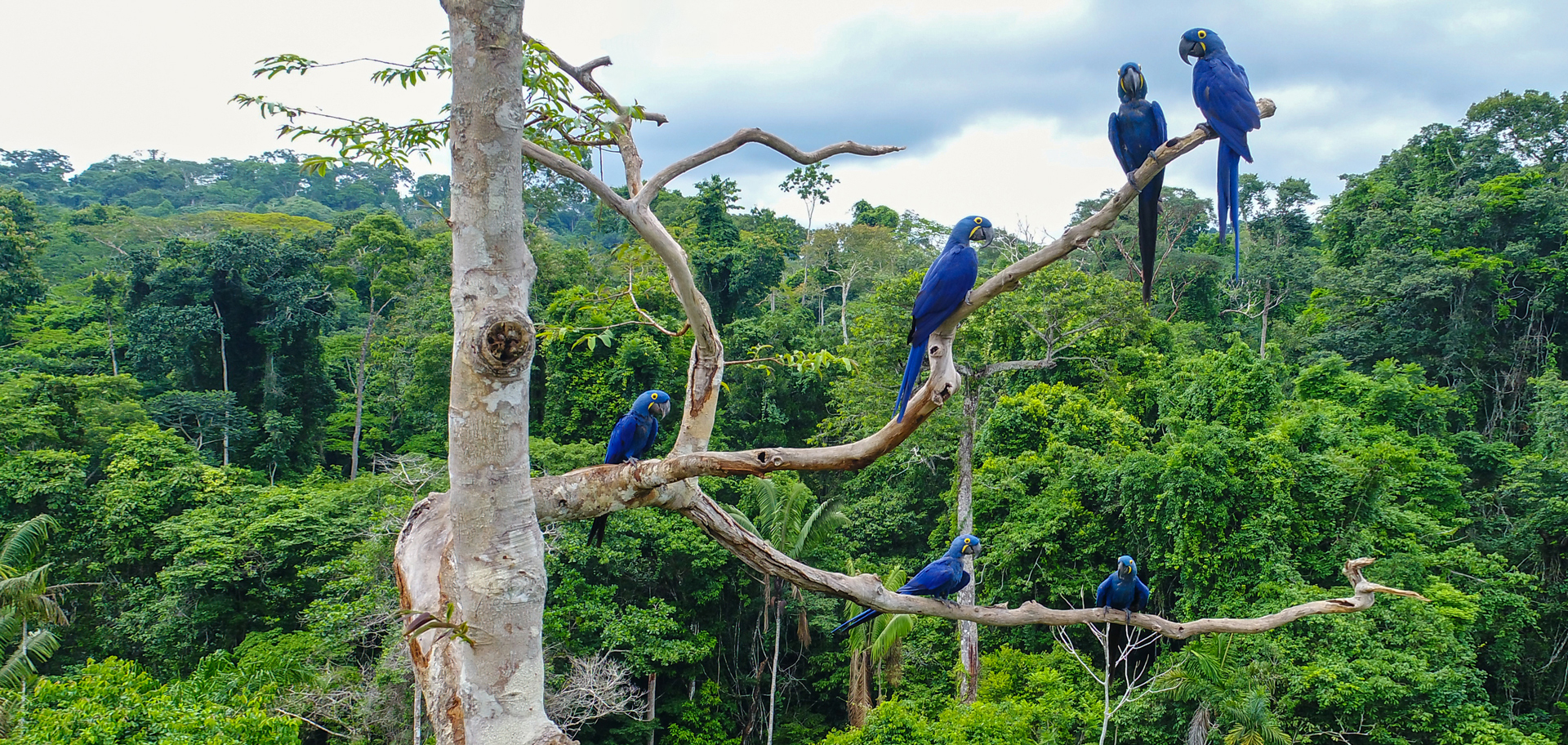
Hyacinth macaws live in both the Pantanal and Amazon Basin regions of Brazil. In 2024, 44.2 million acres of Brazil’s Amazon rain forest burned. In the last few decades, drought—linked to climate change and deforestation—and the expansion of industrial agriculture have driven the fires.
First, the CNN was trained on a dataset of 200 images of wildfires and an equal number of images without wildfires to ensure its learning was balanced. Although small, this number of images proved sufficient for the CNN to achieve 93% accuracy during the training phase. The CNN’s ability to distinguish between images with and without wildfires was then tested using 40 images not included in the training dataset. The model correctly classified 23 of the 24 images with wildfires and all 16 of the images without wildfires, thus underscoring its capability and robustness for generalization and showcasing its potential as a tool for effective wildfire detection.
In their paper, published in the peer-reviewed International Journal of Remote Sensing in December 2024, the researchers state that their findings could improve wildfire detection in the Amazonian ecosystem and elsewhere in the world, significantly assisting authorities in combating and managing wildfires. The CNN, they say, might also be able to be used for monitoring and controlling deforestation.
Artificial intelligence maps forest carbon in minutes
Forests are often called the lungs of our planet, and for good reason. They store roughly 80% of the world’s terrestrial carbon and play a critical role in regulating Earth’s climate. And understanding this carbon cycle is key to climate change research.
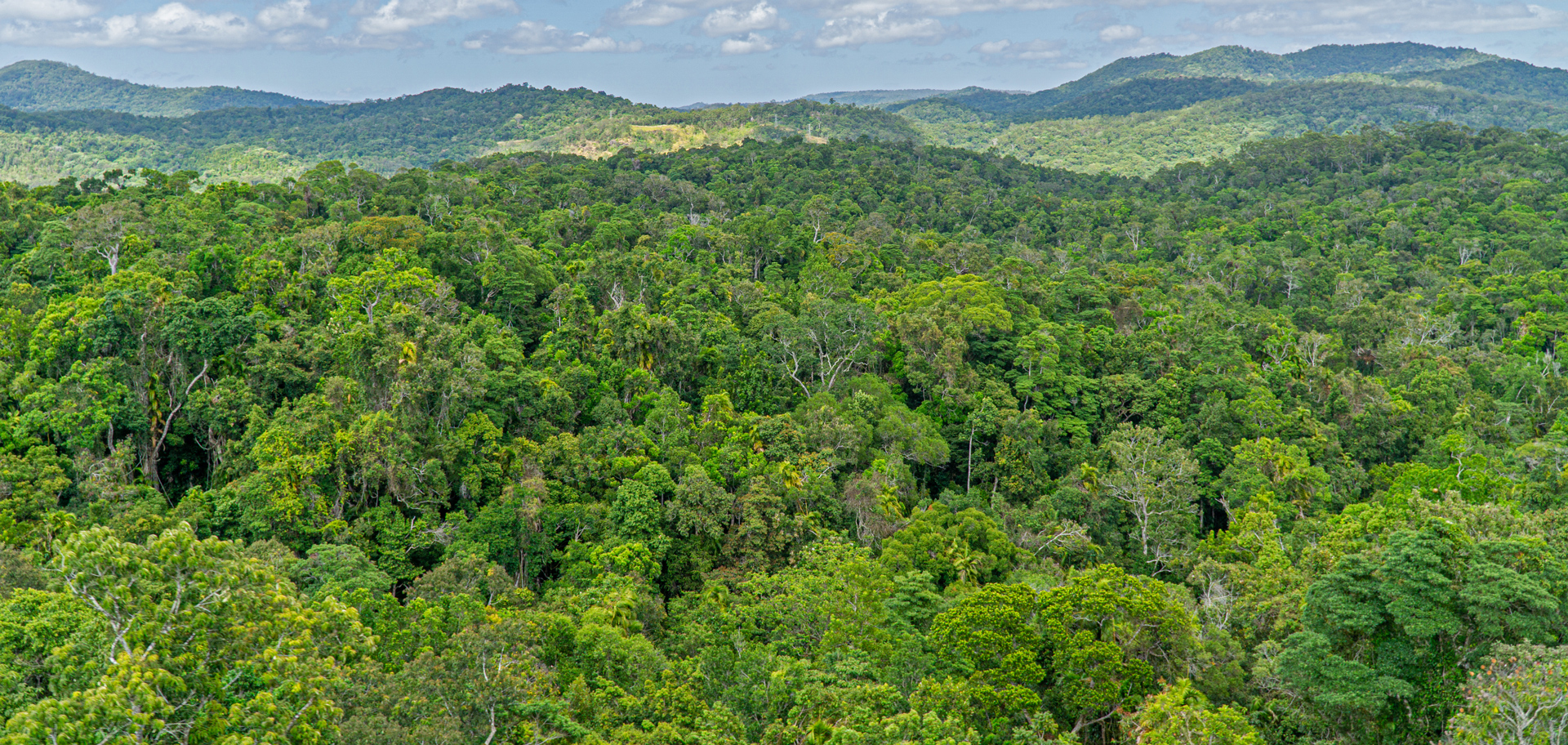
Forests store roughly 80% of the world’s terrestrial carbon and play a critical role in regulating Earth’s climate. To measure a forest’s carbon capacity, a calculation of forest aboveground biomass is needed.
To measure a forest’s carbon cycle, a calculation of forest aboveground biomass is needed. Though effective, traditional ground-based methods for estimating forest aboveground biomass are labor-intensive, time-consuming and limited in spatial coverage abilities. Now, in a study published in the journal Ecological Informatics in May 2025, researchers from the Arkansas Forest Resources Center and the University of Arkansas show how information from open-access satellites can be integrated with artificial-intelligence algorithms on Google Earth Engine to accurately and quickly map large-scale forest aboveground biomass, even in remote areas where accessibility is often an issue.
This novel approach uses data from NASA’s Global Ecosystem Dynamics Investigation Lidar, also known as GEDI Lidar, which includes three lasers installed on the International Space Station. Lidar stands for “light detection and ranging” and uses light pulses to measure distance and create 3D models. The system can precisely measure forest canopy height, canopy vertical structure and surface elevation, all in 3D. Imagery data from the European Space Agency’s collection of Earth-observation, Copernicus Sentinel satellites—Sentinel-1 and Sentinel-2—were also used, improving the accuracy of the biomass estimations.
Accurate forest biomass mapping will allow better accounting of carbon and improve forest management on a global scale. With more accurate assessments, governments and organizations can more precisely track carbon sequestration and emissions from deforestation to make better policy decisions. As climate change intensifies, technology like this will be indispensable in safeguarding our forests and the planet, conclude the researchers.
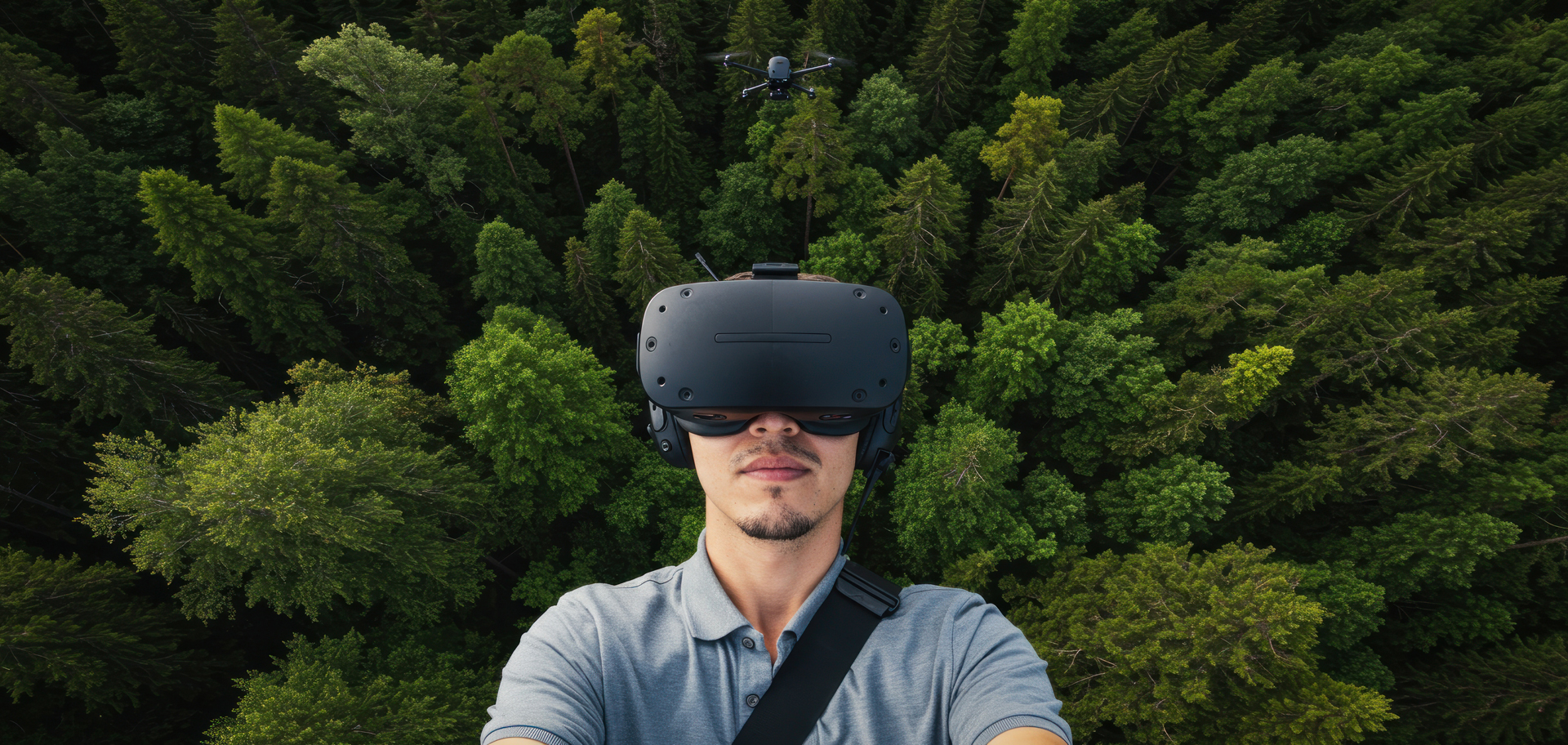
According to The World Economic Forum, nature tech will be vital in helping to accelerate and facilitate nature-based solutions for biodiversity conservation and climate change mitigation. This includes using artificial intelligence, blockchain for carbon transactions, drones, satellite monitoring and virtual reality.
Virtual reality and artificial intelligence could create a brighter future
Especially in places with limited access to nature—such as in clinics, waiting areas or urban interiors—multisensory, virtual-reality applications could support mental well-being. And using VR for telling nature stories—specifically those for environmental-protection campaigns—can have a significant effect in moving and motivating us all.
Artificial intelligence, too, can be employed for nature. With AI, forests could soon monitor themselves; a Plant Doctor can enable both micro-level analyses of individual plants and macro-level insights into disease patterns across urban areas; a neural network coupled with satellite data can detect fires in the Amazon rain forest and a new system can track a forest’s carbon cycle.
In a world where virtual reality and artificial intelligence can be used for nefarious purposes, seeing how such tools can also work like silent guardians of today’s and tomorrow’s ecosystems—taking the measure of the heartbeats of Earth’s natural systems, so to speak—makes me hopeful for a brighter future, where technology learns from and listens to nature.
Here’s to finding your true places and natural habitats,
Candy















